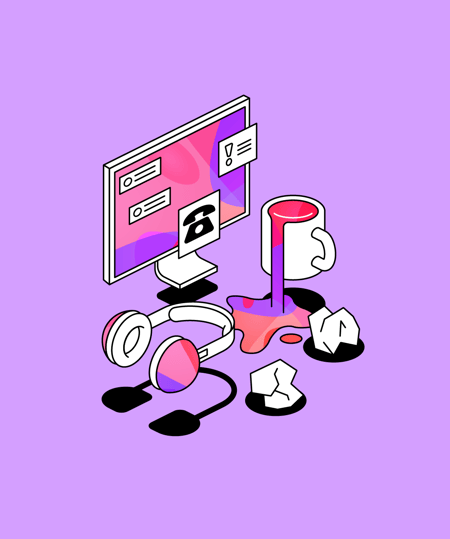Are our brains changing in the digital age?
The human brain is able to learn complex skills, and continually re-organise and reconnect neural pathways, which enable us to learn. Discover more here.
 3 min read
3 min read
 Published: 7 Nov 2019
Published: 7 Nov 2019
 Dr. Sue Wilkinson
Dr. Sue Wilkinson


The human brain is an incredible structure.
It’s able to learn complex skills, and continually re-organise and reconnect neural pathways. This ‘neuroplasticity’ is what enables us to learn.
Creating pathways
The brain’s cells start growing and connecting with each other very early on in life, and this creates neural networks that enable the individual to understand and interact with the world around them. Problems can occur when these connections fail. For many people, this results in alternative ways of processing or perceiving information that can impact on their ability to engage with systems that are designed for those with different connections.
One thing that many people notice about students today is that they have much shorter attention spans and are likely to get bored more quickly than their peers of decades ago.
Are our brains fundamentally different to how they used to be?
There is much debate on this topic and a consensus is yet to be reached.
The problems we see today with students struggling with attention and memory are not necessarily due to faulty connections in their brains’ circuitry. Their struggles may stem from the fact that constant engagement with digital devices has not only changed the way we work and play, but also the way that we think, and therefore learn.
The role of novelty in learning
Our brains are hardwired to be attracted to anything that is novel, and they are continually scanning the environment for any changes that might occur so they can decide whether the change is a threat or not. The traditional learning environments still found today are often full of predictable stimuli where very little changes – just think of a library. This type of environment causes the brain to be less interested in its surrounding environment, hence creating boredom and reduced attention.
If we consider the environments young people exist in, we can understand why our brains have increased their interest in novelty.
What’s changed?
Decades ago, young people existed in homes that were quieter, where families would sit and read, where there was one television set in a communal area in the home, and a strong sense of community.
The modern day environment is a very different picture; young people are completely surrounded by technology and media 24/7 (mobile phones, tablets, multiple TVs in the house, computers, internet, etc.). They receive information not only from school but from multiple other channels, and they are exposed to so much information simultaneously it encourages them to pay attention to many things at once, yet no one thing in depth.
Young people are now adept at processing information-rich and constantly changing messages, but this processing often only occurs at surface level.
Social behaviour is also different to how it used to be. Without technology to distract them, young people used to meet up and play together in the neighbourhood, developing their motor skills and social skills. Now, young people are much more likely to communicate through technology and screens. They are missing out on developing the nonverbal communication skills that are so vital for successful human interaction.
Information is available instantly
Due to the prevalence of smartphones, young people’s attention is always diverted to their phone, and they are always able to find out what they want to know immediately; they just ask Google. It is no wonder they have little patience for delayed gratification.
The environment around young people today contains huge amounts of constant stimulation. Brains have exercised their neuroplasticity and restructured the neural networks to accommodate this, and this has changed the way young people respond to novelty.
The brains of young people today are used to taking in information in a fast-paced digital environment. This is somewhat different to the traditional method of accessing books in libraries that existed decades ago. It explains why young people get bored more easily than they used to. Young people have adapted to their environment, and they therefore struggle to pay attention if the information stream is one dimensional, long winded and boring. They need interactive, multi channeled, and instantly available digital information.
The impact on memory
Young people no longer need to commit important information to memory; they simply remember where they can find this information (e.g. on a particular website). Our brains are becoming so used to being exposed to an overload of visual information that we have had to learn how to scan the environment for important information, picking out what we need and ignoring the rest. Our brains cannot process it all, so we must filter out what is necessary.
This could explain why our brains no longer have the ability to concentrate for prolonged periods of time. Most students these days have trouble focusing and paying attention because their brains are simply not adapted to do so.
Yet this is precisely what we are asking students to do, for example, in lectures. Students with or without additional difficulties would therefore benefit from assistive technology solutions to help their brains function as they require them to in order to absorb the information they need for their education.
Our brains are adapting to the environment around us and the way we use our brains to access and process information is constantly changing as the way information is delivered to us changes. Luckily our brains are incredible structures that are thus far managing to keep up with such advanced changes in our technological landscape.
Want to learn more? Read our blog on The Benefits of Assistive Technology for Students With Autism
More from Better Learning
View All
 4 min read
4 min read
Studying with ADHD: strategies for success
Staying focused while studying is a challenge for everyone, but it’s especially hard for those with attention-deficit/hyperactivity disorder (ADHD).

 4 min read
4 min read
10 ways to reduce anxiety after the winter break
Are you feeling anxious about going back to school or college after the winter break? Start doing these top ten tips straight away!

 4 min read
4 min read
How to stop feeling overwhelmed as a student
Students can feel overwhelmed during their studies, including causes such as homework, exams, and essays. Here are our top tips to alleviate this feeling.





